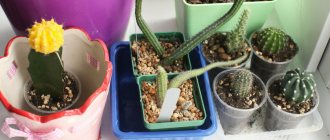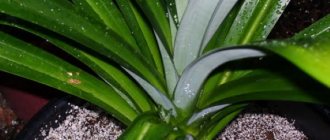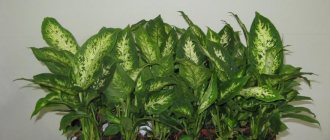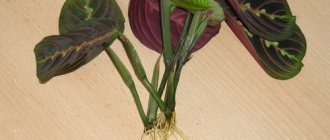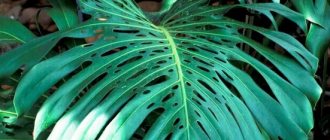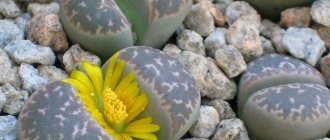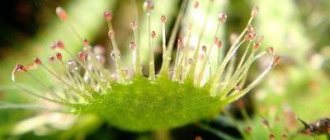The pepper family includes the genus Peperomia. Peperomia bluntifolia is no exception. The tropical regions of Brazil are adorned with these miniature plants. If you translate this name from Greek, it turns out to be similar to pepper, which indicates a direct similarity with this plant.
Each type of peperomia is unique and distinctive. The only difference is the color of the leaves and their structure. They can be collected in a rosette or located on a stem. Peperomia flowers are similar to plantain flowers. Due to the not particularly developed root system, peperomia can be grown in compositions with other indoor flowers.
The main difference between peperomia is that the inflorescences are long, like spikelets, and they look like a mouse’s tail.
Peperomia blunt-leaved is not a tall plant - its maximum height is up to thirty centimeters. Any type of peperomia grows very slowly. Peperomia obtufolia is a wonderful plant for growing at home, which is valued for its good decorative qualities.
You can buy peperomia obtufolia in almost any specialized center and almost all year round.
Peperomia obtufolia - this species has a straight growth form, forming low shoots. If there is not enough lighting, the shoots can bend or reach towards the light. Rotate the pot as needed. Peperomia also lends itself well to pruning; trimmed shoots can be used to propagate this indoor plant.
Appearance and description of the plant
The main difference between all types of peperomia is the shape, color and thickness of the leaves. They are the usual green color, striped, with pronounced veins, white spots, fleshy or flat, curled.
It’s hard to say which ones are more beautiful. You can see small, hairy foliage on the peperomia, as well as the large, spotted, multi-colored variety.
Flowers are divided into three groups according to their shape:
- hanging - with hanging long shoots;
- shrubby – low stocky species, 15–20 cm high ;
- erect - taller varieties, up to 50 cm tall.
Each species has several subspecies and varieties, including hybrid ones. In total there are more than 1,000 names, scattered throughout their natural habitat - subtropics and tropics.
It is generally accepted that this plant is native to South and Central America. In nature, they can grow like epiphytes - on the branches of large trees, which provide them with shade, food and water.
Despite the fact that peperomia is a pepper crop, it is not used as a seasoning in everyday life. This is a full flowering plant that is more suitable for small spaces as it looks compact but luxurious.
The blooms are not as unique as the leaves. The inflorescences are more like plantain blossoms. Some people call them mouse tails.
Interesting varieties with photos of peperomia
Peperomia obtufolia is best suited for home care, as it does not require special attention, unlike other tropical plants. She does not need a cool winter - the plant rests calmly on the windowsill. The requirements for soil nutrition are the most common, as well as for daylight hours and watering.
To choose a plant for yourself, you need to familiarize yourself with what a peperomia flower is and what types are available in stores. Some you can buy only in seed form and try to grow yourself.
Features of caring for Peperomia Lilian at home
Knowing the intricacies of caring for this indoor flower is mandatory if you decide to cultivate it. How comfortable the microclimatic environment is will affect the aesthetics of the shrub and its health. First of all, when caring for peperomia corrugata, you need to take into account its tropical origin. This crop does not tolerate both dry and waterlogged soil. Dry air is also harmful.
Flower growers note the unpretentiousness of the plant. However, it also has a significant disadvantage - the bush grows slowly. If you notice that development has slowed down too much, inspect the bottom of the flowerpot to see if the roots are visible from the drainage. Peperomia may bloom in the summer. To achieve flowering of a bush, you need to provide it with favorable conditions - short daylight hours, abundant soil moisture and frequent spraying.
Pay attention to such types of peperomia as magnolia-leaved and blunt-leaved.
Shrub species
50 species are cultivated in indoor gardening . Bush-like ones are one of the most beautiful and unusual. They reach 20 cm in height, but attract with their varied foliage - in shape and color.
wrinkled
Peperomia wrinkled received its name for its corrugated leaves, which can be of several colors - green, silver, purple. This is a compact species with short stems, similar to a cap. It blooms in late winter - early spring for two months. Breathable soil rich in organic matter and microelements is required. The plant is thermophilic.
Rosso
Caring for Peperomia Rosso at home comes down to providing it with nutrients - mainly nitrogen and phosphorus. The main interest for gardeners is the leaves. It is necessary to ensure that they are decorative so that the foliage is dark green and glossy.
Lillian
Peperomia caperata blooms beautifully with good care at home. The inflorescences are similar to lilies, which is why the flower was named. The color of the leaves is also of decorative interest - they are green with whitish veins.
Silver
Silver peperomia has an unusual leaf color. The veins seem to be recessed and of a darker color, and the swollen leaf plate is light, silvered. Due to the shortened petioles, large foliage is located very close to each other, which looks very beautiful.
Gray-haired
The “gray” effect is given to the plant by the edge of small hairs on the leaves. This is a fairly large plant that can grow up to 50 cm . Over time, the shoots begin to hang down.
Bambino
Refers to compact terrarium varieties. Peperomia bambino grows up to 15 cm - this is at best. Basically, its bright decorative leaves are used to create compositions in closed terrariums.
Difficulties in growing
The plant can get sick if the basic conditions are not met.
The main problems of peperomia:
- blackening of the leaves occurs during a sharp cold snap;
- wrinkling of the leaf plate may appear from sunburn;
- limp leaves are a symptom of rotting or fungal infection;
- dropping leaves indicates dry air and lack of moisture.
Peperomia can also be attacked by some pests:
- Spider mites manifest themselves as a fibrous whitish coating. After the destruction of adult individuals, the foliage is treated with Actofit, Sunmite or Vermitek.
- The appearance of thrips is indicated by dry spots on the leaves and a silvery tint to the leaf. For wrestling use “Aktara”, “Mospilan”, “Karate” according to the instructions.
- The mealybug is noticeable on the lower part of the leaf, where a kind of “flour” and sticky secretion is formed. After mechanical cleaning, it is necessary to treat the plant with the preparations “Rogor”, “Phosfamide”, “Aktara”, etc.
The variety of varieties and colors allows you to choose magnolia-leaved peperomia to suit your taste, and caring for it is not difficult. A compact and useful indoor plant suitable for every home.
Erect species
Many plants of this species have erect stems at a young age, but over time the fleshy leaves begin to outweigh and bend the shoots.
Tupolifolia
The leaves of Peperomia obtufolia have a round or even oval shape, the surface is glossy, without pubescence. There are two varieties:
- with dark green leaves;
- with spotted foliage.
Peperomia obtufolia is the easiest flower to care for; its requirements are similar to those of plants living in the middle zone.
Magnolifolia
Peperomia magnolia foliage resembles a fig tree in its foliage shape. The color is light green, the leaf blades are large, the stems are red. The peduncles are long and directed upward, so their appearance resembles some kind of fantastic plants.
Clusielifolia
Peperomia clusifolia is a multi-colored plant of the pepper family. A distinctive feature is very short petioles and large leaves - up to 15 cm in length and 8 cm in width. The variegated color is complemented by a bright pink edging along the edges of the foliage.
Ferreira
Peperomia ferreira is a succulent that stores moisture in its leaves. In nature it grows in dry places. It is also an epiphyte, so at home you can create entire compositions of tropical palm trees and their cohabitants.
Graveolens
Peperomia graveolens has leaves of unusual shape and color: slightly folded in half, red below, green above. They are fleshy and form a rosette. Flowering in the form of spikelets of a yellowish tint.
Chisel-shaped
Dolabriformis or chisel-shaped peperomia is a succulent. Fleshy, doubled leaves form a star-shaped rosette. Stems with leaves can grow up to 60 cm . This is one of the largest species. It blooms in small inflorescences of a white-green hue.
Variegated
Peperomia variegata is distinguished by its peculiar shade of leaf blades. In appearance it may be similar to clusielifolia, but without edging and a pink tint in color.
Variegated plants cannot be fed with nitrogen fertilizers. In this case, their leaf blades may lose their variegated color and turn green. Such varieties need high-quality lighting to maintain variegation.
Multicarpal
Polybotrya, raindrop or peperomia multitaste is a plant with round leaves. On some, the spouts are elongated and pointed, on others the leaf plates are completely round. The color is dark and glossy.
How to propagate.
- Reproduction. Indoor Peperomia flowers are propagated by apical cuttings and leaf cuttings. There are two methods of propagation: cuttings and leaves. It is better to propagate Peperomia obtufolia by leaves; to do this, we carefully cut them off and treat them with a growth stimulator, for example, root. We plant the leaves in soil consisting of peat and sand. Watering must be careful, since if the soil is very wet, the leaves begin to rot. The process of propagation by cuttings is simpler; to do this, we cut off the cutting and also plant it in the soil. After a month, the cuttings will give roots and can be transplanted to a permanent location. We carry out rooting in a warm and bright place.
Ampelous plants
Hanging varieties can reach a length of 1.5 m . They need to be planted in a pot to avoid damage. Among them there are small-leaved and large-leaved species, which have different shades of stems and leaf blades.
Video: Peperomia - the most frequently asked questions about care
Creeping
Creeping peperomia most prefers soil and air moisture in care, since in nature it grows in wetlands. It is not picky to care for and is very decorative - the leaves can be either a regular green-light green color or variegated.
Golovataya
Peperomia capita glabella in nature is a creeping plant, but at home the stems grow long because they are not damaged. This plant does not have pronounced decorative qualities - the leaves are light green, oval in shape, and medium in size. If you grow a flower under the bright rays of the sun, the less bright the leaf plates become. The stems turn pink when exposed to ultraviolet light.
Round-leaved
This is a miniature compact plant. The size of its leaves is no larger than a penny coin, so it is used in terrarium compositions or in creating bonsai. no more than 15 cm in height .
This is a rather finicky species that can become infected with fungus if you water it carelessly and drops fall on the leaves. It is necessary to use watering through a tray. You should also not keep the bush exposed to direct sunlight.
Whorled
Peperomia whorled differs from similar species in the complete absence of petioles under the leaves, which are collected in whorls of 3 plates. The flower stalks are of interest - they are long and appear in early summer.
Watermelon
A decorative appearance that resembles a watermelon rind in color - a combination of silver and dark green stripes. This is not a hybrid variety, but a completely natural coloring of the plant. The shape of the leaf plate is ovoid, with a sharp nose.
This is more of a ground cover variety; in nature, this species lines the floor of the tropical jungle. Height no more than 12 cm . At home it can become an ampelous plant. It is also used to cover earthen voids under large palm trees.
Features of agricultural technology
It is considered an unpretentious flower. To preserve decorativeness, it is recommended to adhere to a number of rules. All types of peperomia are kept under the same conditions.
- Lighting and location. The best option is the western or eastern side. Keep out the sun. On the south side they are shaded with tulle or placed at a distance from the window. Species with dark leaves grow well in partial shade. Variegated varieties prefer bright but diffuse lighting. They are illuminated with fluorescent lamps. Caring for peperomia of variegated varieties is more difficult in this regard.
- Temperature. There is no rest period. Does not require special temperature conditions. The plant is kept at room temperature 18-22 °C all year round. Does not like cold and drafts. In winter, remove it from the window or place a sheet of foam under the pot. Do not take it outside or onto the balcony even in warm weather.
- Watering. In spring and summer, peperomia needs abundant watering. In autumn and winter, the frequency of watering is reduced. Water as the soil dries, maintaining stable humidity, but without waterlogging. Tap water is allowed to settle for two days. If possible, use soft water.
- Humidity. It tolerates dry apartment air calmly, but responds gratefully to periodic spraying.
- Feeding. Fertilize all year round. Use any complex preparations for deciduous plants. The concentration is reduced by 2 times. In the warm season, the frequency of fertilizing is every two weeks, in the cold season - monthly.
- The soil. The optimal soil for peperomia is loose, light, and well-permeable to water. For 2 parts of leaf soil take 1 part of peat, humus and sand. The addition of soaked hydrogel granules is encouraged.
- Transfer. The first three years are held every April. As you get older, the frequency of transplants is reduced. It is enough to replant adult peperomia once every 2-3 years. A drainage layer up to 5 cm thick is poured into the new pot.
Advice! Peperomia grows best in small, wide pots. Each time, take a pot 1.5 times larger than the old one.
Care requirements
Peperomia are not as difficult to care for as they are sometimes described. These are tropical crops, but they have long adapted to the conditions of the middle zone. It is recommended to grow plants taken from friends, as they are more adaptable than those sold in stores.
Depending on the type of flower, care requirements may vary slightly: some need more water, others less. The same goes for lighting and average temperatures.
If the plant was purchased in a store, it is quarantined. This is a general rule for all flowers, according to which the plant is checked for pests and diseases within 2 weeks . Then it can be placed with other crops on the windowsill.
Watering and humidity
In summer the amount of water is more, in winter – less. Glossy and regular species can be bathed in summer when the air temperature exceeds 27 degrees . Spraying and bathing are contraindicated for only two varieties - round-leaved and gray-haired peperomia. After this procedure, they turn black and die.
To protect the roots from excessive watering, it is recommended to fill the pot one third with drainage - stones, broken bricks, river pebbles. This draws liquid away from the roots, creates air pockets, and the root system can breathe without experiencing drought.
The water should be warm, especially in summer. Cold watering in hot weather can cause temperature shock and the roots will begin to rot.
Succulent varieties are rarely watered, as the plants store moisture reserves in case of drought. If you regularly overwater the roots, they will rot.
Lighting
East and west windows are the best option for this plant. It loves a lot of light. South-facing windows let in more light, so it is recommended to darken them with a curtain to avoid burning the leaf plates.
In winter, flowers lack natural light, so everyone who grows tropical crops tries to purchase phytolamps for evening illumination. In total, daylight hours should last at least 10 hours.
Temperature in summer and winter
Peperomia do not tolerate drafts, and all because in their homeland they grow in a humid forest climate where there is no wind. You should try to organize the same conditions at home. It is not recommended to take flowers outside, especially in windy weather - this can cause damage to the leaves.
Optimal temperature for peperomia:
- in summer from 20 to 22 degrees;
- in autumn from 18 to 20 .
The soil temperature must correspond to the air temperature, otherwise problems with the roots may begin. If the plant is on a cold windowsill, then you need to place insulation under the pot - mineral wool, basalt wool or polystyrene foam.
Pruning and shaping the bush
Every spring, peperomia bushes need to be renewed by pruning and cleaning. This procedure is useful in several ways:
- Removing dry leaves from inside the bush allows sunlight and air to penetrate to the young leaves, protecting them from fungus;
- weak and dead shoots are removed so that they do not consume nutrients;
- fallen leaves can become a source of fungal infection, so they must be removed regularly;
- With the help of pruning, a beautiful bush is formed.
Flowering of Peperomia obtufolia is sometimes delayed due to non-compliance with pruning rules.
Reproduction - methods and procedures
Peperomia is usually propagated by cuttings, as this is the most effective method. But there are others:
- seeds;
- sheet method;
- dividing the bush.
The seed method is quite risky, since not all sellers properly store seeds before sale. This reduces germination. The disadvantage of seed propagation is that the hybrid varieties next year will not be as beautiful as the mother plant. Therefore, seeds must either be purchased from the manufacturer, or another method of propagating peperomia must be used.
With the leaf method there is a greater chance of getting a new plant. You must follow the rules and procedures:
- Using a sharp knife, cut off the leaf with the internode or just the leaf.
- Treat it with root to increase strength.
- Place in water or damp soil (it can be done in different ways).
- Cover the container with film to ensure a constant microclimate.
- Wait 2 weeks - during this time roots should form.
- Transplant into a cup with soil.
Important! The soil for peperomia should be light, breathable, but nutritious. A mixture of sand, leaf humus, peat and garden soil is suitable. All components are taken in equal quantities. Plus you need to put drainage at the bottom
During growth, it is necessary to maintain a slightly acidic or neutral environment in the peperomia pot.
Propagating peperomia by dividing the bush is easier than growing from seeds or leaves. To do this, you need to remove the roots from the soil, cut them with a knife so that there is a root for each green part. Next, sprinkle the sections with activated carbon to prevent rotting, dry them a little in the air and plant them in separate containers.
If the bushes are small, they are temporarily covered with a transparent plastic bottle to organize the microclimate and protect the plants from drafts.
Transfer
It is necessary to replant the bushes as the roots grow. This method allows the root system and top to develop in balance. This means that the size of the roots will correspond to the amount of green matter. If the balance is disturbed, the plant may weaken or even die.
The transplanting rule is that each next pot should be 2 cm larger in diameter than the previous one. This also prevents the soil from becoming too acidic, which will cause bush disease.
How to transplant peperomia:
- A week before transplanting, water the plant with a fertilizer solution to feed it.
- Prepare the soil and a new pot.
- Take out the bush, inspect the roots, remove rotten and dried ones, treat them with activated carbon or a solution of potassium permanganate.
- Make a hole in the soil and place the root there, using your fingers to gently compact the soil around it.
- Pour over warm water.
If the plants are mature and do not grow well, they also need to be transplanted into new nutrient soil, or at least replace the top layer of soil. This is done carefully so as not to damage the root system of the peperomia.
How to care
- The soil. Peperomia are undemanding to soil. The best option is light and water-permeable. You can also use heavier soil. Small-leaved and low-growing peperomias are best grown in lighter, looser soil. The optimal soil for this is a mixture of equal parts of leaf soil, peat soil and sand (1:1:1). You can also use ready-made universal primer, which can be purchased in shopping centers. It is better to plant the plant in peat soil.
- Landing. Planting is done in prepared soil, which can be prepared by you or purchased ready-made. Select a small pot, since the indoor peperomia flower has a small root system. We select a pot under the root ball. There must be good drainage. Expanded clay can be used for drainage. Add perlite or vermiculite to the soil - this will loosen the soil. We plant it at the same level as the plant was in the planting pot. Gently add soil and tamp it down. Water the plant and add soil if necessary.
- Transfer. It is carried out once every two to three years. Spring time of year is the best for transplantation. Or we replant the plant as needed. This is usually due to the plant having outgrown its pot. With such factors, growth slows down and young leaves become shallow. Another reason for replanting is if the plant’s roots come out through the drainage hole.
Fertilizers
Once a month during the active growing season, the plant must be fed with complex mixtures - liquid or dry.
For peperomia to bloom regularly, it needs potassium. To increase green mass - nitrogen. These two macroelements are introduced at different times: nitrogen in early spring, potassium closer to summer.
In order not to have to worry about calculating the amount of fertilizers yourself, you can buy ready-made mixtures for decorative deciduous plants. For spring fertilizing they will contain more nitrogen, for summer fertilizing - more potassium. The binding element is phosphorus. It is he who stimulates the growth of roots so that they provide nutrition to the above-ground part.
If you make an earthen mixture based on garden soil, it may lack some microelements. To do this, it is recommended to periodically apply fertilizing - a diluted solution containing copper, boron, iron, magnesium and other elements in microscopic dosages.
Beneficial features
Peperomia silver.
Photo Needs regular care. In return, it improves the atmosphere in the house, cleanses the air of toxins and formaldehyde vapors, gives a good mood and well-being, creates a favorable aura, and saturates the room with oxygen. The house plant has a beneficial effect on the organs of the digestive system.

